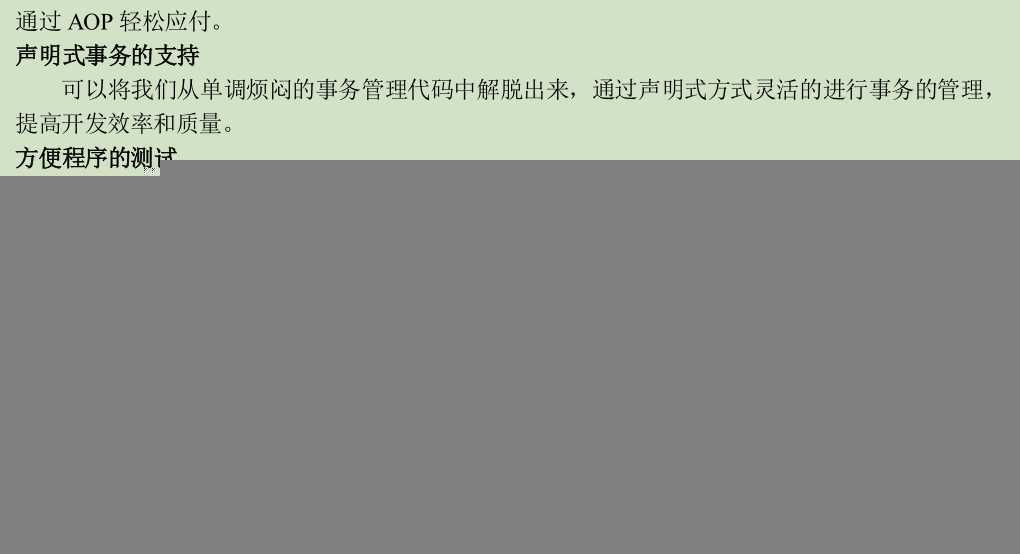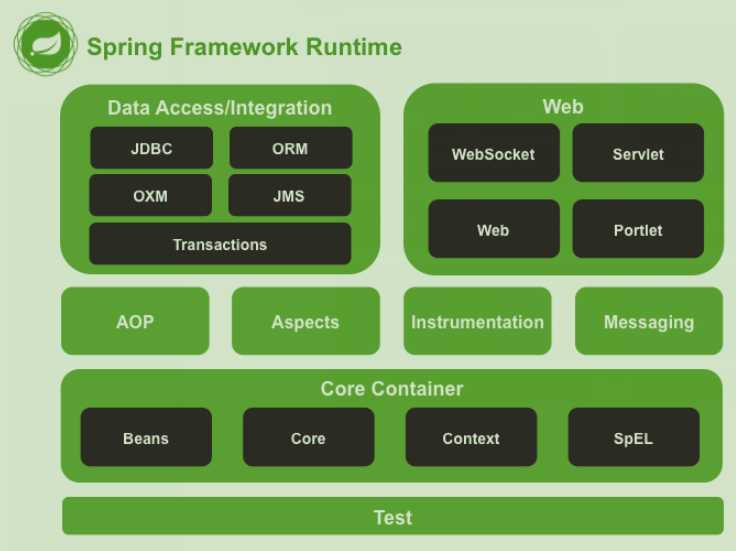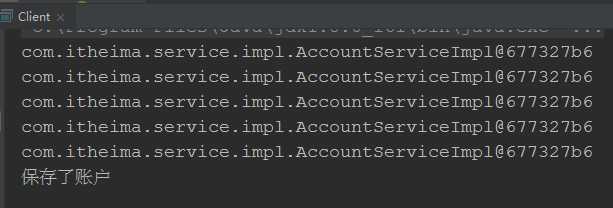标签:hash null set factor 处理对象 实例化 driver 实现类 怎么办




程序间的依赖关系:类之间的依赖和方法之间的依赖。
解构:降低程序间的依赖关系。
实际开发中应该做到:编译期不依赖,实际运行期才依赖。
解耦的思路:
第一步:使用反射来创建对象,而避免使用new关键字。
第二步:通过读取配置文件来获取要创建的对象的全限定类名。
以下是注册驱动的一个例子,第一中方法,如果没有mysql包,编译都不能通过,而第二种方法,编译没有问题,运行时才会出现问题。
package com.itheima.jdbc; import java.sql.*; /** * 程序的耦合 */ public class JDBCdemo1 { public static void main(String[] args) throws Exception { // 1.注册驱动 // DriverManager.registerDriver(new com.mysql.jdbc.Driver()); Class.forName("com.mysql.jdbc.Driver"); // 2.获取连接 Connection con = DriverManager.getConnection("jdbc:mysql://localhost:3306/eesy", "root", "123456"); // 3. 获取操作数据库的预处理对象 PreparedStatement pstm = con.prepareStatement("select * from account"); // 4.执行sql语句,得到结果集 ResultSet rs = pstm.executeQuery(); // 5.遍历结果集 while (rs.next()){ System.out.println(rs.getString("name")); } // 6.释放资源 rs.close(); pstm.close(); con.close(); } }
第一步:创建接口和实现类
package com.itheima.dao; /** * 账户的持久层接口 */ public interface IAccountDao { /** * 模拟保存账户 */ void saveAccout(); }
package com.itheima.dao.impl; import com.itheima.dao.IAccountDao; public class AccountDaoImpl implements IAccountDao { public void saveAccout() { System.out.println("保存了账户"); } }
package com.itheima.service; /** * 业务层的接口 */ public interface IAccountService { /** * 模拟保存账户 */ void saveAccount(); }
package com.itheima.service.impl; import com.itheima.dao.IAccountDao; import com.itheima.dao.impl.AccountDaoImpl; import com.itheima.factory.BeanFactory; import com.itheima.service.IAccountService; /** * 账户的业务层实现类 */ public class AccountServiceImpl implements IAccountService { // private IAccountDao accountDao = new AccountDaoImpl() ; private IAccountDao accountDao = (IAccountDao) BeanFactory.getBean("accountDao"); public void saveAccount() { accountDao.saveAccout(); } }
第二步:利用反射,创建一个工厂
#bean.properties
accountService = com.itheima.service.impl.AccountServiceImpl accountDao = com.itheima.dao.impl.AccountDaoImpl
package com.itheima.factory; import java.io.InputStream; import java.util.Properties; /** * 创建Bean对象的工厂 * bean:在计算机英语中,有可重用组件的意思。 * javaBean:用java语言编写的可重用组件。 * 它就是创建文明的service和dao对象的。 * <p> * 第一个:需要一个配置文件,配置service和dao * 配置内容:唯一标志 = 全限定类名 * 第二个:通过读取配置文件中配置的内容,反射创建对象。 * <p> * 我们的配置文件可以使xml和properties */ public class BeanFactory { // 定义一个静态properties对象 private static Properties props; //使用静态代码块为properties对象赋值 static { try { // 实例化对象 props = new Properties(); // 获取properties文件的流对象 InputStream in = BeanFactory.class.getClassLoader().getResourceAsStream("bean.properties"); props.load(in); } catch (Exception e) { throw new ExceptionInInitializerError("初始化properties失败"); } } /** * 根据bean的名称获取bean对象 */ public static Object getBean(String beanName) { Object bean = null; try { String beanPath = props.getProperty(beanName); bean = Class.forName(beanPath).newInstance(); } catch (Exception e) { e.printStackTrace(); } return bean; } }
第三步:模拟一个表现层,用于调用业务层
package com.itheima.ui; import com.itheima.factory.BeanFactory; import com.itheima.service.IAccountService; import com.itheima.service.impl.AccountServiceImpl; /** * 模拟一个表现层,用于调用业务层 */ public class Client { public static void main(String[] args){ // AccountServiceImpl as = new AccountServiceImpl(); AccountServiceImpl as = (AccountServiceImpl) BeanFactory.getBean("accountService"); as.saveAccount(); } }

以上创建的为多例模式,如果想改成单例模式怎么办呢?
package com.itheima.factory; import java.io.InputStream; import java.util.Enumeration; import java.util.HashMap; import java.util.Map; import java.util.Properties; /** * 创建Bean对象的工厂 * bean:在计算机英语中,有可重用组件的意思。 * javaBean:用java语言编写的可重用组件。 * 它就是创建文明的service和dao对象的。 * <p> * 第一个:需要一个配置文件,配置service和dao * 配置内容:唯一标志 = 全限定类名 * 第二个:通过读取配置文件中配置的内容,反射创建对象。 * <p> * 我们的配置文件可以使xml和properties */ public class BeanFactory { // 定义一个静态properties对象 private static Properties props; // 定义一个map,用于存放我们要创建的对象,我们称之为容器。 private static Map<String, Object> beans; //使用静态代码块为properties对象赋值 static { try { // 实例化对象 props = new Properties(); // 获取properties文件的流对象 InputStream in = BeanFactory.class.getClassLoader().getResourceAsStream("bean.properties"); props.load(in); // 实例化容器 beans = new HashMap<String, Object>(); // 取出配置文件中所有的key Enumeration<Object> keys = props.keys(); // 遍历枚举 while (keys.hasMoreElements()) { // 取出每个key String key = keys.nextElement().toString(); // 根据key获取value String beanPath = props.getProperty(key); // 反射创建对象 Object value = Class.forName(beanPath).newInstance(); // 把key和value存入容器之中 beans.put(key, value); } } catch (Exception e) { throw new ExceptionInInitializerError("初始化properties失败"); } } /** * 根据bean的名称获取bean对象 */ /* public static Object getBean(String beanName) { Object bean = null; try { String beanPath = props.getProperty(beanName); bean = Class.forName(beanPath).newInstance(); } catch (Exception e) { e.printStackTrace(); } return bean; }*/ // 根据bean的名称获取对象 public static Object getBean(String beanName) { return beans.get(beanName); } }
package com.itheima.ui; import com.itheima.factory.BeanFactory; import com.itheima.service.IAccountService; import com.itheima.service.impl.AccountServiceImpl; /** * 模拟一个表现层,用于调用业务层 */ public class Client { public static void main(String[] args){ // AccountServiceImpl as = new AccountServiceImpl(); AccountServiceImpl as = (AccountServiceImpl) BeanFactory.getBean("accountService"); for (int i = 0; i < 5; i++) { System.out.println(as); } as.saveAccount(); } }


第一步:
<?xml version="1.0" encoding="UTF-8"?> <project xmlns="http://maven.apache.org/POM/4.0.0" xmlns:xsi="http://www.w3.org/2001/XMLSchema-instance" xsi:schemaLocation="http://maven.apache.org/POM/4.0.0 http://maven.apache.org/xsd/maven-4.0.0.xsd"> <modelVersion>4.0.0</modelVersion> <groupId>com.itheima</groupId> <artifactId>day04_springBean</artifactId> <version>1.0-SNAPSHOT</version> <packaging>jar</packaging> <dependencies> <dependency> <groupId>org.springframework</groupId> <artifactId>spring-context</artifactId> <version>5.0.2.RELEASE</version> </dependency> </dependencies> </project>
第二步:
package com.itheima.service; /** * 业务层的接口 */ public interface IAccountService { /** * 模拟保存账户 */ void saveAccount(); }
package com.itheima.service.impl; import com.itheima.service.IAccountService; /** * 账户的业务层实现类 */ public class AccountServiceImpl implements IAccountService { public AccountServiceImpl() { System.out.println("对象创建了"); } public void saveAccount() { System.out.println("service中的数据执行了"); } }
第三步:
package com.itheima.factory; import com.itheima.service.IAccountService; import com.itheima.service.impl.AccountServiceImpl; /** * 模拟一个工厂类(该类可能是存在于jar包中的,我们无法通过修改源码的方式来提供默认构造函数) */ public class InstanceFactory { public IAccountService getAccountService(){ return new AccountServiceImpl(); } }
package com.itheima.factory; import com.itheima.service.IAccountService; import com.itheima.service.impl.AccountServiceImpl; /** * 模拟一个工厂类(该类可能是存在于jar包中的,我们无法通过修改源码的方式来提供默认构造函数) */ public class StaticFactory { public static IAccountService getAccountService(){ return new AccountServiceImpl(); } }
第四步:
<?xml version="1.0" encoding="UTF-8"?> <beans xmlns="http://www.springframework.org/schema/beans" xmlns:xsi="http://www.w3.org/2001/XMLSchema-instance" xsi:schemaLocation="http://www.springframework.org/schema/beans http://www.springframework.org/schema/beans/spring-beans.xsd"> <!-- 把对象的创建交给spring来管理 --> <!-- spring对对象的管理细节 1.创建bean的三种方式 2.bean对象的作用范围 3.bean对象的生命周期--> <!--创建bean的三种方式--> <!--第一中方式,使用默认构造函数创建--> <!--<bean id="accountService" class="com.itheima.service.impl.AccountServiceImpl" ></bean>--> <!--第二种方式: 使用普通工厂中的方法创建对象(使用某个类中的方法创建对象,并存入spring容器)--> <!-- <bean id="instanceFactory" class="com.itheima.factory.InstanceFactory"></bean> <bean id="accountService" factory-bean="instanceFactory" factory-method="getAccountService"></bean> --> <!--第三种方式:使用工厂中的静态方法创建对象(使用某个类中的静态方法创建对象,并存入spring容器)--> <bean id="accountService" class="com.itheima.factory.StaticFactory" factory-method="getAccountService"></bean> <!-- bean的作用范围调整 bean标签的scope属性: 作用:用于指定bean的作用范围 取值: 常用的就是单例的和多例的 singleton:单例的(默认值) prototype:多例的 request:作用于web应用的请求范围 session:作用于web应用的会话范围 global-session:作用于集群环境的会话范围(全局会话范围),当不是集群环境时,它就是session --> <!-- bean对象的生命周期 单例对象 出生:当容器创建时对象出生 活着:只要容器还在,对象一直活着 死亡:容器销毁,对象消亡 总结:单例对象的生命周期和容器相同 多例对象 出生:当我们使用对象时spring框架为我们创建 活着:对象只要是在使用过程中就一直活着。 死亡:当对象长时间不用,且没有别的对象引用时,由Java的垃圾回收器回收 --> </beans>
第五歩:
package com.itheima.ui; import com.itheima.service.IAccountService; import org.springframework.context.ApplicationContext; import org.springframework.context.support.ClassPathXmlApplicationContext; /** * 模拟一个表现层,用于调用业务层 */ public class Client { public static void main(String[] args) { // AccountServiceImpl as = new AccountServiceImpl(); // 1.获取核心容器对象 ApplicationContext ac = new ClassPathXmlApplicationContext("bean.xml"); IAccountService as = (IAccountService) ac.getBean("accountService"); System.out.println(as); as.saveAccount(); } }
标签:hash null set factor 处理对象 实例化 driver 实现类 怎么办
原文地址:https://www.cnblogs.com/xinmomoyan/p/11511863.html